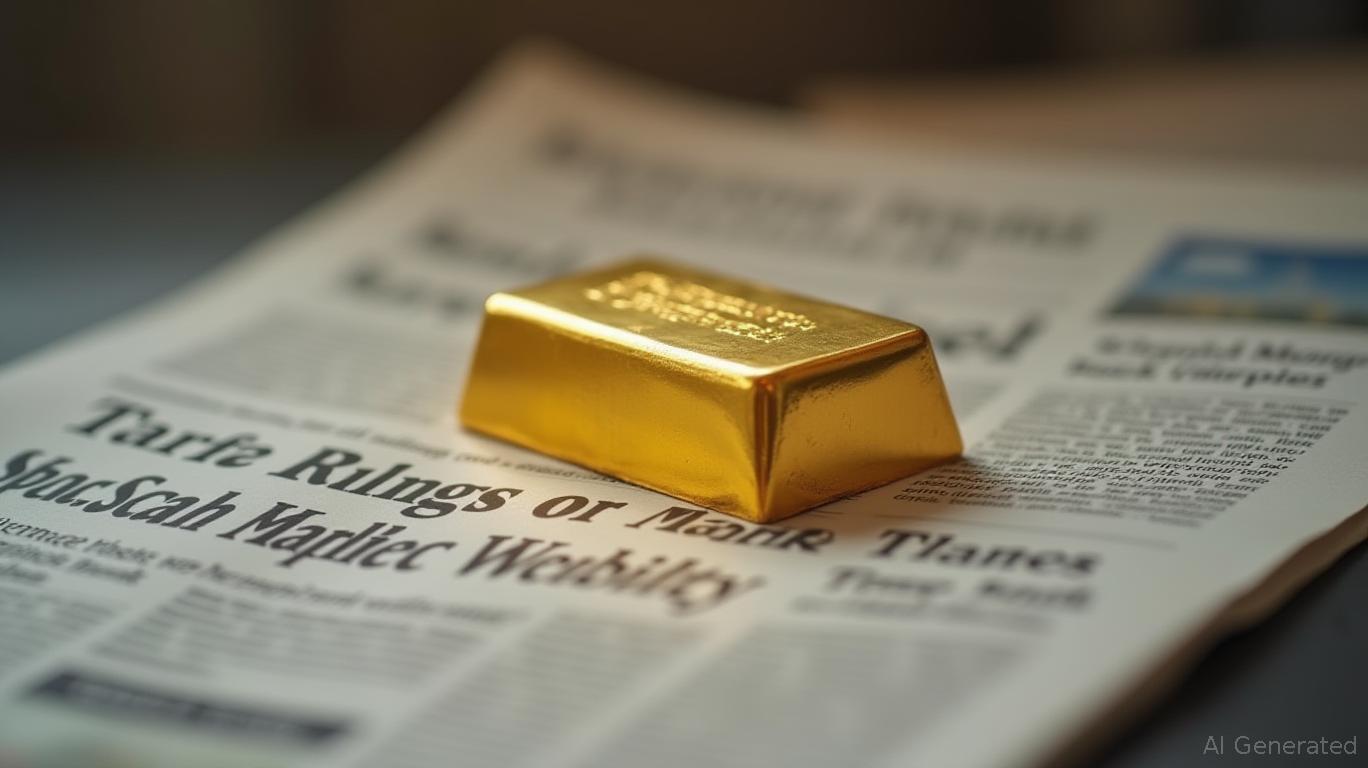Gold and Silver Surge: Navigating the Tariff-Driven Precious Metals Rally
The precious metals market has entered a new era of volatility and opportunity, driven by a perfect storm of global tariff policies, inflationary pressures, and shifting central bank strategies. Gold has surged to record highs, while silver’s price swings—reaching $35/oz before collapsing to $28/oz—highlight its precarious balancing act between industrial necessity and speculative asset. This article examines the forces reshaping the market and what investors should anticipate in the coming months.

The Tariff Effect: Safe Havens and Supply Chain Shocks
The Trump-era tariffs on steel and aluminum (25% on imports) ignited a chain reaction. By raising production costs for industries reliant on these materials, tariffs amplified inflation, adding 0.3–0.5% to U.S. consumer prices. Investors, seeking refuge from trade uncertainty, flocked to gold, which climbed $600/oz from late 2023 to April 2024. Meanwhile, silver’s dual role as an industrial metal (critical for solar panels and EV batteries) and a precious metal created a tug-of-war.
Inflation and Central Banks: Fueling the Fire
Persistent core inflation (2.8% in the U.S.) has kept central banks in a tight spot. The Federal Reserve’s reluctance to aggressively hike rates—despite a GDP shortfall of 6.8%—has eroded real yields, a key driver for gold. The inverse correlation between gold and real yields has strengthened, with prices rising as bond yields stagnate. underscores another tailwind: a weaker dollar typically boosts dollar-denominated commodities like gold.
Central banks have become active buyers, adding a record 1,100 tonnes of gold in 2024. China’s People’s Bank resumed purchases in late 2024, signaling confidence in gold as a reserve asset. Analysts like J.P. Morgan’s Gregory Shearer note that such demand could amplify price gains if geopolitical tensions or economic downturns escalate.
Silver’s Crossroads: Industrial Demand vs. Scarcity
Silver’s volatility stems from its duality. While industrial demand (especially from EV manufacturers) is surging, its status as a scarce commodity could trigger a “slingshot effect” if investment demand joins the fray. TD Securities warns of potential inventory depletion by late 2025, while Goldman Sachs predicts silver could outperform if gold’s rally continues. However, retail investors remain hesitant, fearing short-term dips.
The Road Ahead: Bulls in Gold, Caution in Silver
The outlook for gold remains bullish. reflect growing consensus that macroeconomic risks—trade wars, stagflation fears, and central bank diversification—will sustain its rally. Physical market tightness, evidenced by widening premiums between spot and delivery prices, adds credibility to these forecasts.
Silver, however, requires a nuanced approach. Investors must weigh its industrial utility against structural deficits. A “buy-the-dip” strategy could capitalize on volatility, but bottlenecks in supply chains and investor sentiment pose risks.
Conclusion: A New Era for Precious Metals
The 2024–2025 period has cemented gold’s role as the ultimate hedge against macroeconomic uncertainty. With central banks holding 74% of U.S. reserves in gold and ETF inflows surging, the metal’s trajectory appears secure. For silver, the path is narrower but potentially lucrative—if investors can navigate supply constraints and industrial demand spikes.
The data is clear: gold’s rise is systemic, while silver’s success hinges on resolving its dual identity. As J.P. Morgan’s $3,263/oz peak in April 2025 demonstrates, the market is pricing in a prolonged era of instability. For investors, this is a call to diversify into gold for safety and consider silver as a high-risk, high-reward play—with an eye on supply metrics and industrial trends. The next chapter of this rally will be written in the boardrooms of central banks and the factories of EV manufacturers alike.


_442a2dcc1749832873286.jpeg)
_e68fac6d1749831664430.jpeg)






